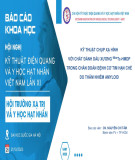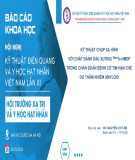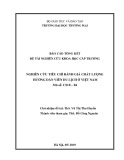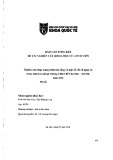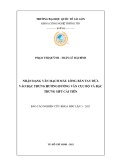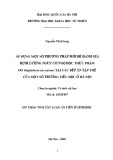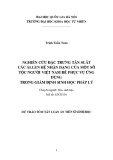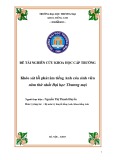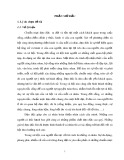
STUD Y PRO T O C O L Open Access
The WRITTEN-HEART study (expressive writing for
heart healing): rationale and design of a
randomized controlled clinical trial of expressive
writing in coronary patients referred to residential
cardiac rehabilitation
Gian Mauro Manzoni
1,2*
, Gianluca Castelnuovo
1,2,3
and Enrico Molinari
1,2,3
Abstract
Background: Coronary heart disease (CHD) is typically associated with many cardiovascular risk factors (e.g.,
elevated blood pressure), low health-related quality of life, depression, anxiety and psychological stress. Expressive
writing (EW) has shown beneficial effects on such variables in both people from the community and in patients
with a variety of chronic illnesses. However, no study to date has evaluated the physical and psychological effects
of the expressive writing procedure on coronary patients referred to cardiac rehabilitation (CR).
Methods: The clinical effectiveness of a 2-week disease-related expressive writing procedure (writing about one’sdeepest
thoughts and feelings regarding the experience with heart disease) compared with the standard writing task (writing
about one’s deepest thoughts and feelings about the most traumatic or negative event experienced in the life), a neutral
writing condition (writing about the facts regarding heart disease and its treatment) and an empty control condition will
be evaluated in a randomized controlled clinical trial (RCT) with repeated follow-up measurements at 3, 6 and 12 months
after discharge from CR. The primary outcome is health-related quality of life (SF-12). Secondary outcome measures are
depression (BDI-II), anxiety (BAI) and post-traumatic growth (PTGI).Furthermore,thestudywillexplorethemoderating
effects of coping styles, type D personality, perceived emotional support and participants’evaluative ratings of the writing
interventions on the main experimental effects in order to identify sub-groups of patients showing different results.
Discussion: The WRITTEN-HEART study aims to explore and expand the frontiers of the expressive writing research
enterprise by investigating the feasibility, safety and clinical efficacy of brief and cost-effective expressive writing
interventions in patients with CHD referred to CR.
Trial registration: ClinicalTrials.gov NCT01253486
Background
The World Health Organization (WHO)’sstatisticssug-
gest that cardiovascular diseases (CVDs) are the number
one cause of mortality for all males and females,
accounting for almost 30% of all global deaths [1].
Despite this alarming scenario, the age-adjusted cardio-
vascular (CV) death rates have decreased almost 50%
during the past 25 years [2]. Improved management of
acute myocardial infarction (MI), earlier diagnostic pro-
cedures, advanced intervention techniques and especially
the recognition and management of CV risk factors have
resulted in an increasing number of CVD survivors [3].
However, such gains in survival rates have resulted in a
significant increase in physical disability, impaired
health-related quality of life and high psychosocial dis-
tress, particularly in the rapidly growing population of
elderly persons [4,5].
* Correspondence: gm.manzoni@auxologico.it
1
Istituto Auxologico Italiano IRCCS, Psychology Research Laboratory,
Ospedale San Giuseppe, Verbania, Italy
Full list of author information is available at the end of the article
Manzoni et al.Health and Quality of Life Outcomes 2011, 9:51
http://www.hqlo.com/content/9/1/51
© 2011 Manzoni et al; licensee BioMed Central Ltd. This is an Open Access article distributed under the terms of the Creative
Commons Attribution License (http://creativecommons.org/licenses/by/2.0), which permits unrestricted use, distribution, and
reproduction in any medium, provided the original work is properly cited.






